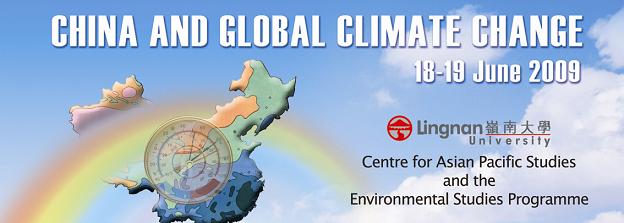
Event Title
Conference on China and Global Climate Change : Reconciling International Fairness and Protection of the Atmospheric Commons
Location
AM310, Lingnan University
Start Date
19-6-2009 11:00 AM
End Date
19-6-2009 12:30 PM
Language
English
Description
The Hong Kong Observatory has been making meteorological observations at its headquarters in Tsim Sha Tsui since 1884. Analysis of the extensive past records reveals that the temperature rise in Hong Kong during the past 125 years is in accord with the global rising trend. In last few decades anthropogenic influences, especially urbanization, have contributed significantly to the accelerated rising trend. A similar increasing trend is also observed for rainfall but the trend after 1947 is not statistically significant. Other observations such as increasing cloud amounts, decreasing total global solar radiation and rising sea level are all consistent with the global trend. Studies of past occurrences of extreme temperature and rainfall have recently been carried out. It is observed that cold episodes have become rarer while very hot days and heavy rain events are becoming more frequent. The corresponding return periods of heavy rain and very hot days are decreasing while those of very cold days are increasing. The Observatory also makes use of the data from the latest assessment report of the Intergovernmental Panel on Climate Change and employs statistical downscaling techniques to carry out projections of temperature and precipitation in the 21st century. In gist, the findings are that the rise in temperature will be slightly higher than the global mean in the 21st century. There will also be a significant decrease in the number of cold days and an increase in the number of very hot days and hot nights. The annual rainfall in Hong Kong is also expected to rise by the end of the 21st century, so is the year-to-year variability.
Document Type
Presentation
Recommended Citation
Ginn, E. W. L., & Lee, T. C., & Chan, K. Y. (2009). Climate change in Hong Kong: Observations and projections. In China and global climate change: Proceedings of the conference held at Lingnan University, Hong Kong, 18-19 June 2009 (pp. 422-443). Centre for Asian Pacific Studies and the Environmental Studies Programme, Lingnan University, Hong Kong.
Included in
Climate change in Hong Kong : observations and projections
AM310, Lingnan University
The Hong Kong Observatory has been making meteorological observations at its headquarters in Tsim Sha Tsui since 1884. Analysis of the extensive past records reveals that the temperature rise in Hong Kong during the past 125 years is in accord with the global rising trend. In last few decades anthropogenic influences, especially urbanization, have contributed significantly to the accelerated rising trend. A similar increasing trend is also observed for rainfall but the trend after 1947 is not statistically significant. Other observations such as increasing cloud amounts, decreasing total global solar radiation and rising sea level are all consistent with the global trend. Studies of past occurrences of extreme temperature and rainfall have recently been carried out. It is observed that cold episodes have become rarer while very hot days and heavy rain events are becoming more frequent. The corresponding return periods of heavy rain and very hot days are decreasing while those of very cold days are increasing. The Observatory also makes use of the data from the latest assessment report of the Intergovernmental Panel on Climate Change and employs statistical downscaling techniques to carry out projections of temperature and precipitation in the 21st century. In gist, the findings are that the rise in temperature will be slightly higher than the global mean in the 21st century. There will also be a significant decrease in the number of cold days and an increase in the number of very hot days and hot nights. The annual rainfall in Hong Kong is also expected to rise by the end of the 21st century, so is the year-to-year variability.

